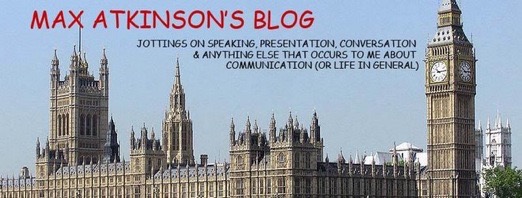A couple of years after the release of The Best of Sellers (see previous entry) came the revue Beyond the Fringe, which launched the careers of Alan Bennett, Peter Cook, Dudley Moore and Jonathan Miller.
One of the many high spots in the show was Alan Bennett's sermon preached from the text "My brother Esau is an hairy man, but I am a smooth man" - a nice contrast, followed up by some fine examples of repetition, rhetorical questions, similes and anecdotes - but more or less completely devoid of content.
When I was at school, a group of us persuaded the chaplain, or padré, as Bennett would have called him, to listen to it. Perhaps predictably, he didn't seem to think it was at all funny and couldn't see any connection between it and the sermons he and visiting preachers were inflicting on us at the compulsory services we had to attend every Sunday.
See if it reminds you of any sermons you've heard - and, if you want to see the full text and other gems from the show, click the title above to access details of the book on Amazon.
50 years since Peter Sellers recorded his memorable political speech
After mentioning a content-free political speech by the late Peter Sellers in an earlier blog entry, I’ve just discovered that you can listen to the original track from The Best of Sellers (1958) on YouTube - which you can access by clicking HERE or on the title above.
Rhetorical questions and audience involvement
It may seem fairly obvious that, if you say something that gets an audience wondering or anticipating what’s coming next, you’re likely to increase their attentiveness and involvement. But it’s not always quite so easy to find an example that provides a clear demonstration of how posing a puzzle or a rhetorical question actually works.
Sometimes, television editors come to the rescue, as happened in the following clip from the speech by Tory leader David Cameron at his party conference in 2006.
As he pauses at the end of his rhetorical question, the camera cuts away to the audience, where you can see a woman on the left of the screen nodding in agreement with his anticipated answer. And you don’t have to be particularly good at lip reading to see that she is also saying “yes” – about two seconds before Cameron’s own “yes” triggers the more generalised display of agreement (applause).
As a footnote, it’s also worth observing that there are people like this woman, who respond more visibly than others, in most audiences – and very encouraging they are too, whatever type of speech or presentation you happen to be making. They are one of the reasons why maintaining eye contact is so important for speakers, because, once you’ve identified who these people are, you have a very useful and continuing barometer of how well (or badly) you’re doing.
Sometimes, television editors come to the rescue, as happened in the following clip from the speech by Tory leader David Cameron at his party conference in 2006.
As he pauses at the end of his rhetorical question, the camera cuts away to the audience, where you can see a woman on the left of the screen nodding in agreement with his anticipated answer. And you don’t have to be particularly good at lip reading to see that she is also saying “yes” – about two seconds before Cameron’s own “yes” triggers the more generalised display of agreement (applause).
As a footnote, it’s also worth observing that there are people like this woman, who respond more visibly than others, in most audiences – and very encouraging they are too, whatever type of speech or presentation you happen to be making. They are one of the reasons why maintaining eye contact is so important for speakers, because, once you’ve identified who these people are, you have a very useful and continuing barometer of how well (or badly) you’re doing.
Subscribe to:
Posts (Atom)
